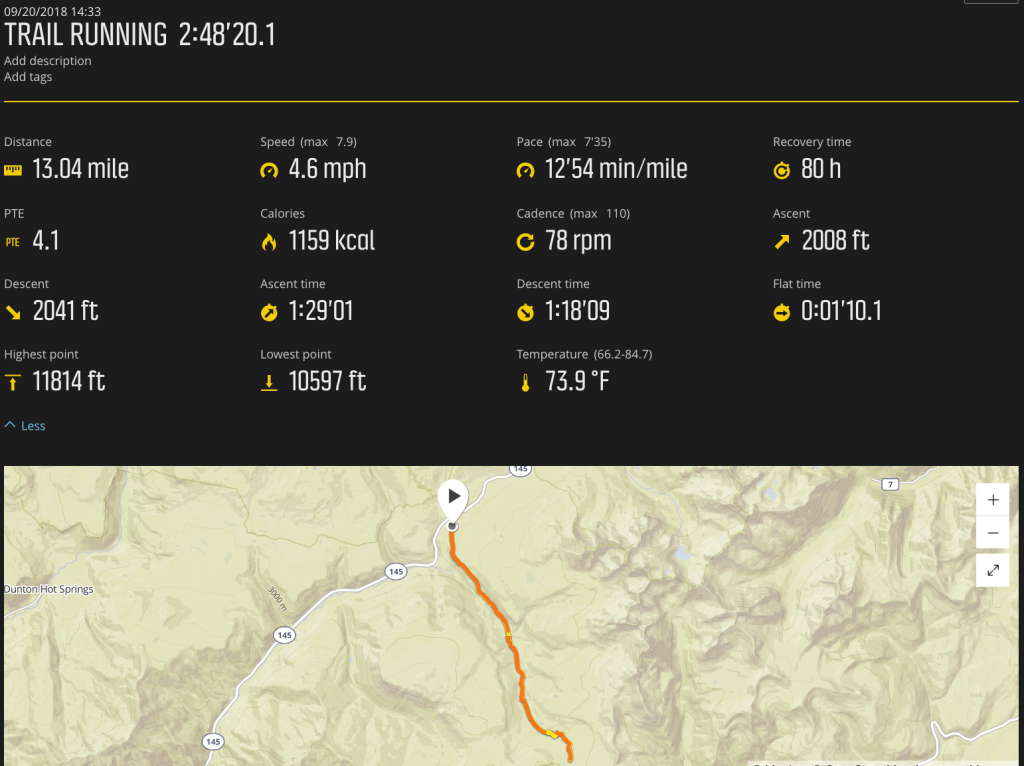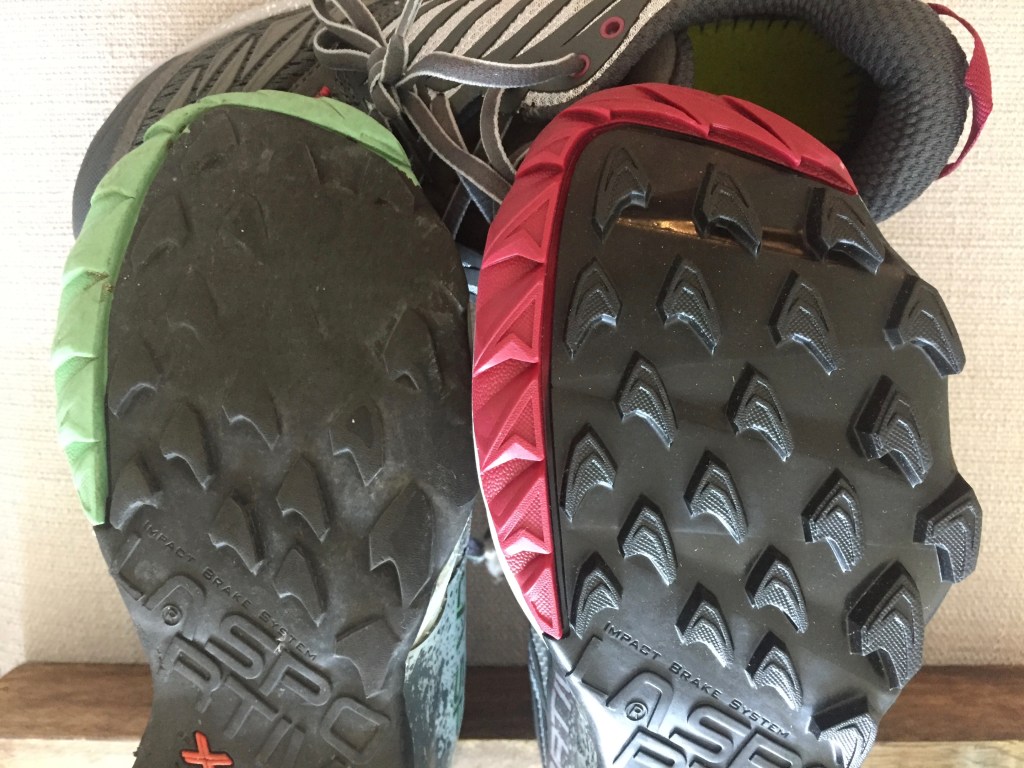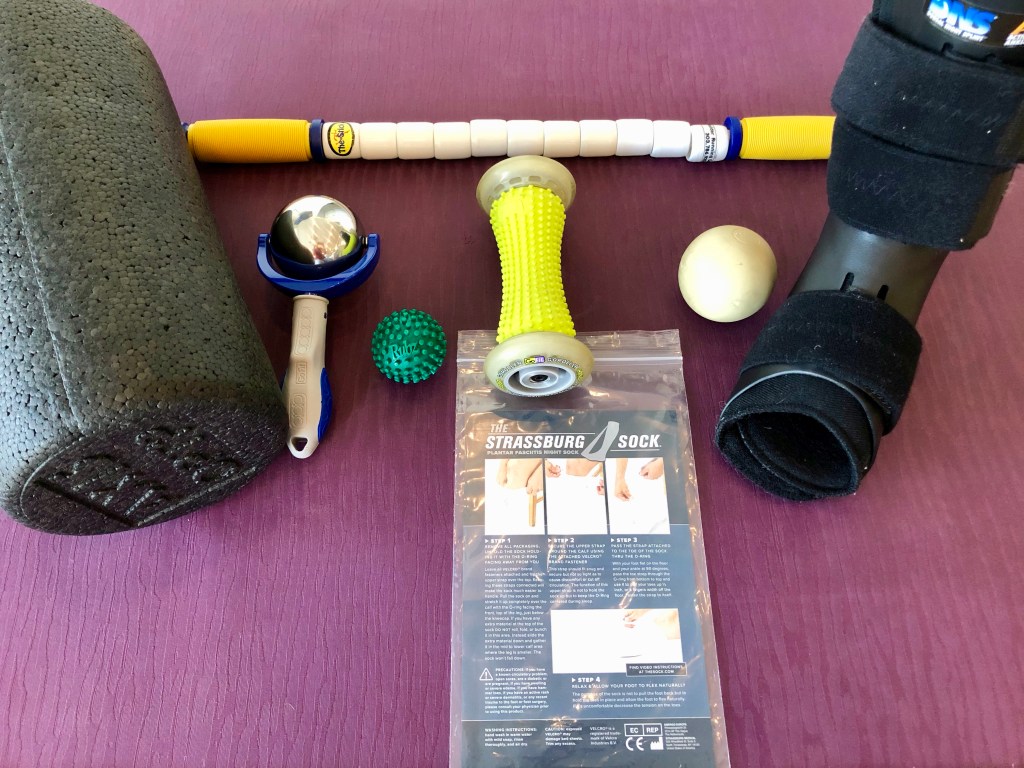What is it, and why am I writing about it?
Plantar fasciitis is inflammation of the thick connective tissue, which runs along the bottom of the foot, connecting the toes to the heel bone. It is incredibly painful, often worse first thing in the morning, and I have had it twice now. I am writing this post, so I can refer back to my recovery plan, and perhaps you will find it useful. I am not being paid by anyone, not affiliated, associated, authorized, endorsed by, or in any way officially connected to any of the linked products.
I’ve never considered myself a runner, but in fall 2018, I really feel in love with running. At that time, we were living in Mountain Village Colorado at 9,540′ and the trails right outside our front door, literally led to the top of a 13,000-foot peak. My first run was very brief and painful; my mouth quickly filled-up with the taste of blood. By mid-September, I topped out that 13er once a week, and I had run my first half-marathon all over 10,000 feet.

Unfortunately, all my running came to a halt in December 2018 when I experienced my first bout of plantar fasciitis. At that time, my regular trail runners had ~300-miles on them, but I did one 10-mile run in a new winter runner, which seems to have been the trigger. I didn’t have any pain on that 10-miler from Ouray to Ridgway, but every run I went on after that day hurt. So I stopped running, started using a GoFit Foot Roller, and just “waited” for the inflammation to leave. I basically took three-months off of running, which killed me mentally as I had been averaging 65-miles a month. But taking time off worked, as I went back to running in March 2019 without any pain.

For the rest of 2019, I averaged 55-miles a month, but we had moved to sea-level in Destin, Florida. My new challenge was acclimatizing to the heat and humidity, which I don’t usually tolerate well. But I am more fit now, and as a result, my body has adjusted quite well. My average pace drops slightly, with increased heat and humidity, but my mileage has not. Unfortunately, in March 2020, plantar fasciitis struck again in my right foot. I had 500-miles on my shoes and thought they just needed to be replaced, but after a few painful runs in new shoes, I knew it wasn’t only the shoes.
In early March 2020, I was laid off because of the Covid-19 pandemic, a double whammy, as I had a ton of time on my hands, but I couldn’t run. So I decided to focus on rehabilitating my foot. For the remainder of March and part of April, I walked, did yoga, and iced my foot every day. Despite that effort, I wasn’t seeing the kind of improvement I hoped for, so I went back to the drawing board and came up with a “Recovery Plan.”

I developed a 6-week recovery plan of daily stretching, massage, icing, and running based on an article in Runner’s World and some stretching I learned about on SmashweRx. Here’s the daily routine:
- Foot Writing: first thing in the morning
- Towel Grab: two minutes (both feet)
- Foot, Calf, and Hip Stretching: 45 minutes (both legs)
- Start with a full-body foam roll
- Roll out each foot and calf with the GoFit foot roller (this super helpful video uses a ‘peanut massage ball’ for this stretch)
- Roll each foot with the lacrosse or Rubz ball
- Place the lacrosse ball, under the calf–starting at the Achilles tendon, find the sorest spot, add some pressure and do a few foot circles. Then move the ball up the calf and repeat for the entire length.
- Massage each calf with “The Stick” massager or GoFit polar roller
- Skandasana stretch (both legs)
- Utthan Pristhasana with quad stretch variation (both legs)
- Pigeon stretch (both legs)
- Ice Bath: 20-30 minutes
- Dorsal Night Splint: designed to which stretches the fascia
- A cousin lent this to me, but I found it really difficult to sleep in, so I wore it for 2-3 hours every day instead
- Massage: 20-30 minutes (my husband should receive an award for this effort)
- Strassburg Sock: 8-10 hours at night
Here are the five running phases. I only progressed to the next stage, if my pain did not escalate, above a four out of 10 (with 10 being the worst pain imaginable).
| Phase | Running Intervals | Rest | Repeat |
|---|---|---|---|
| 1 | Run 1-minute, stretch 2-minutes (5 sets) | 2-days | 3 times |
| 2 | Run 2-minutes, stretch 2-minutes (5 sets) | 2-days | 3 times |
| 3 | Run 4-minute, stretch 2-minutes (5 sets) | 2-days | 3 times |
| 4 | Run 8-minute, stretch 2-minutes (5 sets) | 2-days | 3 times |
| 5 | Run 16-minute, stretch 2-minutes (3 sets) | 2-days | 3 times |
I have just entered Phase 5, and I am psyched! Honestly, I doubt that I would be recovering quite so well if I didn’t have all this extra time on my hands. So there’s something I can be grateful for during this crazy pandemic. To keep my mind busy during all the stretching and icing, I watched some really motivational running videos; check out Courtney Dauwalter and Fiona Oakes. Ideally, in June, I’ll ramp back up to my 72-mile per month goal. Update: I ran 63-miles and walked 85-miles in June 2020.
Thanks for reading my post, I hope you do not have plantar fasciitis, but if you do, I hope you learned something that you can use in your recovery.
Is your shoe pretty flexible? You may need a shoe that’s stiffer and gives more support. I have very high arches and the insert makes all the difference in the world. You may need to see a podiatrist if you continue to have problems. When I went last time, they took a mold of my feet and made inserts specifically for me and that did the trick. The thing is, it doesn’t go away. It can come back at anytime. They also told me I could no longer go bare foot. So the right support may do the trick. D
LikeLiked by 1 person
Thanks so much for your comments. Sorry to hear you’ve suffered from this too. I’ve found that my plantar fasciitis inflammation is just a symptom of the real problem… my calves and hips. There’s a good explanation of this here https://youtu.be/Hnrz_3rmG6I. If I run on shoes that are worn out, it changes the mechanics of my gate, which in turn causes the inflammation. After working through this rehab regimen for the last 5 weeks, I don’t currently have any pain and I am running short 16-minute intervals. Thanks again for your comments and thoughts.
LikeLike
I am a little but afraid I am suffering with my first bout now so I this post came at the right time! Thank you for sharing your treatment plan….I hope you get to running and feeling better really soon!! 🙂
LikeLiked by 1 person
Oh no, sorry to hear you are suffering from it right now. I hope you find something that works for you. Cheers!
LikeLiked by 1 person
Awesome treatment of Plantar Fasciitis. Someone should pay you to place this on their “Treatment Remedies” web site.
LikeLiked by 1 person
Thanks Frank!
LikeLike